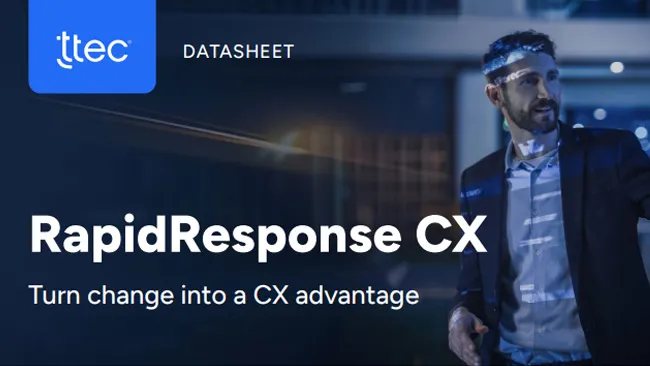In healthcare, whether to participate in social media too often comes down to risks versus rewards. Many industry leaders cite U.S. privacy regulations in healthcare as a major barrier to fully embracing social media for patient and community engagement. The risk of saying something in a social channel that may violate patient confidentiality is simply too great for some providers.
This dilemma is no longer a valid reason to shun social media. Consumers expect to interact with businesses of all kinds in social channels, so healthcare providers must stop ignoring those channels, and start using them to drive their businesses. Providers need to leverage the valuable opportunities social media provides to communicate with patients, educate them, and in turn, gain insight into how their firms impact the healthcare customer experience. Whether a healthcare firm has begun its social journey or is just now mapping it out, this five-part plan can guide it along the path to success.
1. Understand it
The healthcare industry has been hesitant to step forward and experiment with social media because no clear guidelines exist that state what healthcare companies can or cannot do in the face of heavy regulations. This uncertainty isn't an excuse to ignore social media.
Given HIPPA laws, many healthcare providers' policy is to just "say nothing at all." But with an increasing number of consumers turning to social media to get answers to their healthcare questions, providers not engaging in social are missing out on opportunities to educate and empower their patients.
Additionally, the knowledge that healthcare companies will glean by listening to patients and caregivers in the social media space can be extremely valuable if providers act on what they learn. Doing so will have a positive impact on a provider's brand perception and bottom line. Healthcare companies must start familiarizing themselves with social media concepts, tools, and vendors, as well as learn from the experience of early adopters in healthcare by researching the best practices of firms that are farther down the social media path.
Rather than jumping into Facebook or Twitter, providers first need to understand which social media channel is most appropriate for their specific goals. For example, a hospital may host an online forum to gather feedback, use Twitter and Facebook for news updates, YouTube to feature interviews with leaders in specific practice areas, and a blog to share educational content with patients.
Best Practice: GlaxoSmithKline (GSK) leverages social media to communicate in a way that traditional websites cannot. Social media is part of the company's commitment to transparency and a way to provide information to its customers and stakeholders. For example, GSK uses Facebook to share company news, and employees also answer subscribers' questions there. The pharma company has 18,000 "likes." GSK uses Twitter to report news and other company activities to its 6,500 followers; it posts photos on Flickr that journalists can use; YouTube features GSK videos about financial performance, philanthropic activities, and recruitment; and the company uses LinkedIn for healthcare networking.
2. Embrace it
As GSK demonstrates, standing on the social media sidelines is no longer an option. Consumers want social interaction. According to Manhattan Research, in 2010 more than 169 million Americans went online to research health information. This growth in online research is an opportunity for healthcare providers to reach beyond the traditional patient-physician relationship to help consumers sort through the often conflicting health information available online.
To harness this opportunity, healthcare companies must make social media a defined and formal part of their business, including assigning responsibility, establishing a budget appropriate for their goals, and determining areas where it may be a valuable new tool for the business. This includes making social media education a formal objective for key employees. Moreover, social media efforts must align with and support the same business goals that govern every other resource in the company.
Additionally, healthcare companies must designate a social media subject matter expert, and task this person with coordinating the execution of the social agenda. Among his responsibilities will be documenting the company's social media activities and investments, engaging the organization in a dialogue to define areas of potential business impact and likely candidates for pilot projects, and creating and overseeing the approval of the budget necessary to execute the agenda.
Best Practice:
The lack of guidance for social media in healthcare didn't stop Roche from joining the conversation. The company created a social media playbook that outlines its philosophy on social media. The easy-to-digest, four-page document establishes ground rules and principles, gives a high degree of employee latitude, and lists seven rules of communication when speaking about Roche as an employee. The seven rules include such actions as only share publicly available information; be transparent about your affiliation with Roche and that opinions raised are your own; be a "scout" for sentiment and critical issues; follow the Roche Group Code of Conduct and Communications policy; and follow approval processes for publications and communication.
3. Observe it
Social media offers a unique opportunity to listen as patients and caregivers discuss the strengths and weaknesses of an organization, as well as its competitors' businesses. Knowing what consumers are saying about a specific healthcare company's service, departments, and personnel provides tremendous insight. These conversations are taking place in thousands of social communities and forums. Gaining an understanding of that dialogue is vital to long-term business growth.
One of the first steps in monitoring is to define an objective. Have a clear goal in mind, such as being alerted when consumers post negative or positive comments about a company or identify people and communities in need of a specific service.
Next, decide where to monitor. Social media is all about dialogue and building relationships with customers. Monitoring can help providers determine which channels their customers use, and consequently, which ones are best to listen to and engage with those customers. Start by monitoring the conversations for a period of time to understand what types of topics are being discussed, and then develop an interaction plan that meets the objectives created in step 2.
After the initial listening phase, it's essential to develop a comprehensive monitoring strategy. This should include formal "listening" programs that not only ensure that the company's collective finger is on the pulse of social conversations, but also identify specific areas of interest and concern. Such programs are fertile sources of insight that providers can use to drive pilot activities and planning of initiatives in social media going forward. A listening program will also offer healthcare companies the opportunity to engage in dialogue, should a critical problem or opportunity present itself.
Best Practice: Children's Hospital Boston leverages active communities on Facebook, Twitter, and YouTube, as well as several blogs to encourage discussions, send health news, and collect feedback about patients' experiences in an effort to continue to improve the hospital/patient relationship. The hospital uses Facebook to send news updates, connect patients with each other, and allow patients to comment on their experiences or send a "shout-out" to their favorite doctor or nurse. Children's Hospital Boston uses YouTube to send video updates on the latest research, and Twitter to send news on health topics and innovation developments.
4. Explore it
After providers determine a strategy, develop an organizational structure, and create a listening program, it's time to get everyone in the organization on board. Sharing customers' communication preferences and data on social trends internally can help the social media strategy gain traction. In addition, pilot programs are effective for making the business case for investing and participating in social media.
Healthcare companies should proactively identify several social media pilots or proof of concept opportunities, and then execute and evaluate the success of those opportunities. This will serve as a learning opportunity and source of data and results on which to base next steps.
A "crowd-sourcing" pilot that gathers customer feedback to apply to such areas as product development or advertising is also an effective way to demonstrate the power of social behavior, and an exercise that will be most successful if planned and executed thoughtfully.
Best Practice: Humana recently launched its own social network for its Medicare Advantage and Medicare Advantage Part D members. The strategy is to provide information that policyholders need in an experiential fashion, as well as to drive increased use of the Humana Member Assistance Program. The Humanaville online community includes real-world-style locations and activities such as a town square, health clinic, library, fitness center, games, and relaxation spots. While in these locations, members can interact through online chat and community discussion forums where they can post original content and topics, ask questions, and respond to each other on those topics.
5. Include it
Healthcare companies must enter 2012 with a clear set of social media priorities, an associated budget that identifies investment resources, and a well-developed perspective on social's business impact. The social media priorities should be documented in a plan, supported by key stakeholders in the organization, and aligned with the company's overall business and customer strategy. There should be budget available to support the priorities, and internal and external resources dedicated to them. The expected impact of these investments should be communicated to employees and stakeholders as well.
Best Practice: Mayo Clinic has woven social activity throughout its operations (see page 14). Its doctors use micro-blogging like Twitter to share insight quickly. For example, providing health alerts and research findings. It uses social networking sites, including Facebook and Patients Like Me, for a higher level of interaction; video to give patients more information about a particular medical condition; and blogs to share information and encourage questions.
Additionally, last year Mayo Clinic launched its Center for Social Media to serve as a resource for health-related organizations. It provides webinars, workshops, boot camps, and an online curriculum to train healthcare professionals on the use of social media. It also provides consulting and coaching on aligning social media strategies with business goals.
Social impacts future business
The successes of companies like GSK, Childrens Hospital Boston, and Mayo Clinic demonstrate the urgency for other healthcare companies to embrace social media. Providers that adopt this five-step social media agenda will be well-positioned to make a significant impact on their business in 2012 and beyond.
















